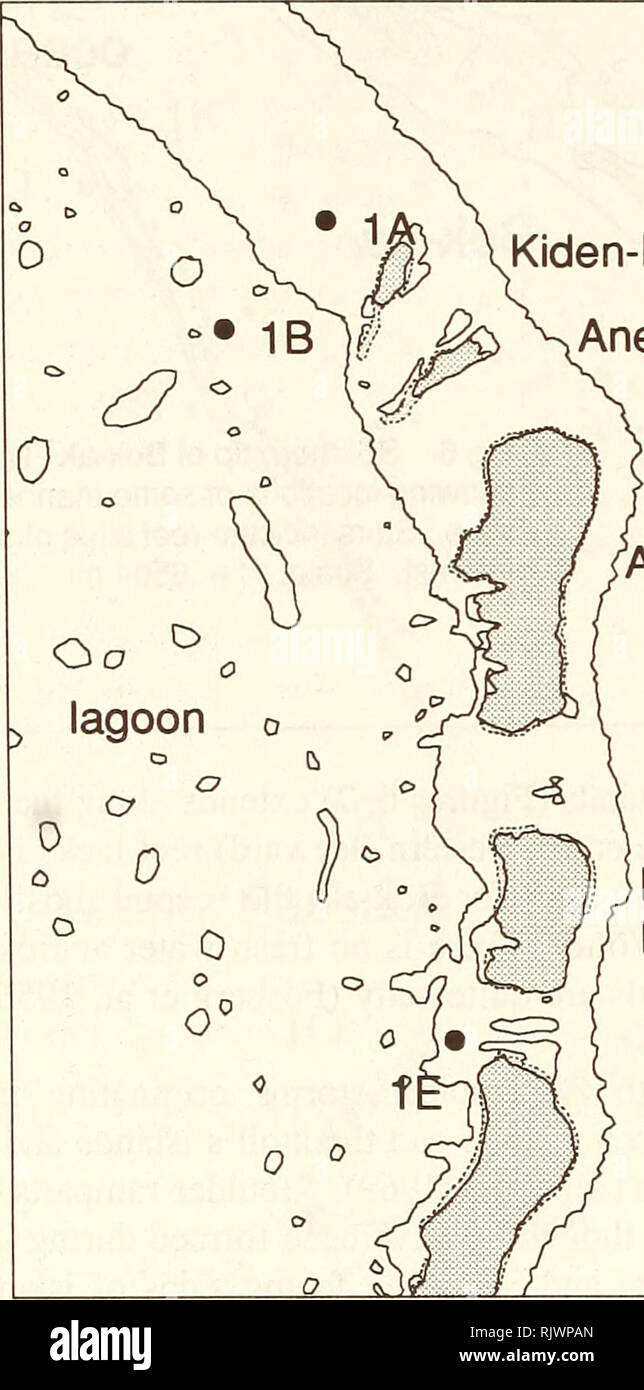. Atoll research bulletin. Coral reefs and islands; Marine biology; Marine sciences. 30 levels were observed to fluctuate less than one foot. At high tide all reefs and corals are flooded to depths of a few inches or more. Water levels in the lagoon never dropped below mean tide level. Sand deposits covered the floor of the lagoon while most elevated surfaces were covered with live coral. Lagoon coral communities were very healthy with only a few dead corals observed. Giant clam populations in the lagoon were huge, including the species Tridacna maxima, T. squamosa, and Hippopus hippopus. Desp

Image details
Contributor:
Library Book Collection / Alamy Stock PhotoImage ID:
RJWPANFile size:
7.1 MB (255.2 KB Compressed download)Releases:
Model - no | Property - noDo I need a release?Dimensions:
1113 x 2245 px | 18.8 x 38 cm | 7.4 x 15 inches | 150dpiMore information:
This image is a public domain image, which means either that copyright has expired in the image or the copyright holder has waived their copyright. Alamy charges you a fee for access to the high resolution copy of the image.
This image could have imperfections as it’s either historical or reportage.
. Atoll research bulletin. Coral reefs and islands; Marine biology; Marine sciences. 30 levels were observed to fluctuate less than one foot. At high tide all reefs and corals are flooded to depths of a few inches or more. Water levels in the lagoon never dropped below mean tide level. Sand deposits covered the floor of the lagoon while most elevated surfaces were covered with live coral. Lagoon coral communities were very healthy with only a few dead corals observed. Giant clam populations in the lagoon were huge, including the species Tridacna maxima, T. squamosa, and Hippopus hippopus. Despite an intensive search neither live or dead remains of the largest species Tridacna gigas were reported. Neither were sea turtles observed at Bok-ak. Sharks were numerous, especially black tips inside the lagoon and grey and white tip reef sharks outside the lagoon.. Fig 7. Bok-ak (Taongi) Atoll in the vicinity of the cluster of large eastern islands. Scale: 1 "=.8953 mi. Kiden-Kan Ane Bokan N t Ane Jalto ocean Bokon-Ak Bok-Dik Bok-Ak Eastern (windward) perimeter reefs at Bok-ak are different in shape compared to those of larger more open atolls to the south in the Marshalls. Observations at an elevation of about 8m, from the deck of a recently wrecked Japanese longliner fishing vessel on the windward reef (site 1-C), revealed that spur and groove formations are well developed and typical. However, the coralline algal ridge was a wide irregular feature, rather than a more typical elevated ridge measuring only a few meters in width (see also Fosberg, 1988). The reef crest was generally flat but elevated 2 or more feet above mean. Please note that these images are extracted from scanned page images that may have been digitally enhanced for readability - coloration and appearance of these illustrations may not perfectly resemble the original work.. Smithsonian Institution. Press; National Research Council (U. S. ). Pacific Science Board; Smithsonian Institution; National Mus